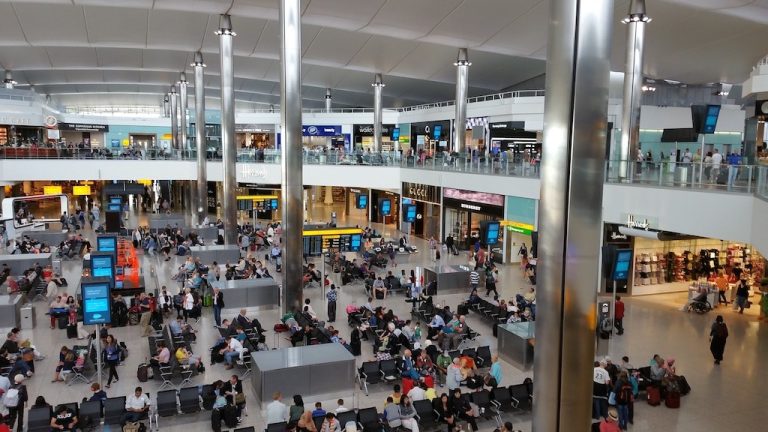Traveling the world is truly amazing. I love to explore new places and learn about different cultures. It has changed my life in many positive ways. But, I’ve also learned how important cultural etiquette is. It helps us interact respectfully and build connections.
I soon found out what’s polite in one place might not be in another. Each culture is unique. They have their own ways of greeting, dressing, and eating. It’s important to know and respect these differences.
Learning about cultural etiquette is more than just being polite. It’s a way to truly respect local traditions. It broadens our view and makes us value the world’s colorful diversity.
This guide will cover everything you need to know about cultural etiquette. We will talk about greetings, how to dress, and being polite at special places. You’ll discover how to enhance your travel with these insights.
Come along as we explore different cultures. We’ll learn, grow, and appreciate the beauty of diversity around the world.
Key Takeaways:
- Understanding and respecting cultural etiquette is crucial for respectful international travel.
- Each culture has its own set of norms and traditions that should be honored and respected.
- Cultural etiquette is about showing genuine respect and embracing diversity.
- We will delve into various aspects of cultural etiquette, including greetings, gestures, dress codes, dining customs, and behavior at religious and cultural sites.
- Join me on this journey of cultural exploration as we learn, adapt, and embrace the diversity that awaits us in every corner of the globe.
Greetings and Gestures
Greetings play a big role in how we connect with others. They show the many diverse cultures in the world. Knowing and using local greetings helps build strong relationships and respect for customs. It shows we care and understand.
Across the globe, how people greet each other is very different. Some places like Argentina and Mexico use one air kiss. Others, like Spain and Portugal, prefer two air kisses. In places like Russia, three air kisses are common. Yet in parts of France, you may even see four air kisses.
Handshakes can also be quite unique. In Botswana, for example, people shake hands and then interlock thumbs. They raise their arms, and then release into a relaxed position. In Zimbabwe, they may shake hands and follow with clapping in a rhythm.
Special gestures reflect different cultures too. In northern Mozambique, clapping three times before saying hello is common. In Thailand, a wai shows respect by pressing your hands together and bowing. The higher your hands, the more respect you show.
“Greeting customs provide insight into the values and social norms of a particular culture. By understanding and adopting these gestures, we can bridge cultural gaps and build meaningful connections.”
In Japan, bowing is a traditional sign of respect. Men bow with hands by their sides, women on their thighs. It’s about being humble and showing respect. In many parts of Asia and Africa, greeting elders first is seen as showing respect for their wisdom.
India and Nepal have a unique way to greet, called namaste. It involves pressing your palms together and bowing your head slightly. It’s a way to acknowledge the divine in everyone and the connection between us.
In some parts of Africa, like Liberia and Nigeria, young people may kneel to show respect to their elders. This tradition teaches respect for the wisdom of those who are older.
These examples show the many ways people greet each other all around the world. Each way reflects the values and traditions of its culture. By learning about and using these greetings, we can make deep and meaningful connections wherever we travel.
Dress Codes
When we travel to new places, we must follow the local dress codes. This means dressing in ways that respect the culture’s religious and social norms. It shows our respect for their traditions. We also make a good impression and respect the customs of the people we visit.
In Latin cultures, traditional values play a big part in how people dress. Men should dress modesty by covering their arms and legs. For women, the need for modest attire is even more important. This includes high expectations for dressing respectfully.
Being a first-generation daughter in an immigrant family can be tough. You might want to express yourself but find it hard due to family dress rules. The tension can sometimes lead to family disagreements.
Women in many societies, including Latin cultures, often dress modestly out of concern for their safety. This is because they may fear inappropriate behavior. Understanding these cultural concerns is important when choosing what to wear.

In Islamic cultures, modest dress is key for both sexes. It’s a way to show faith and cultural values. But it’s crucial to remember that choosing modest dress is a personal decision for many Muslim women.
Discussing dress codes is also about school rules. These can sometimes affect girls more than boys. The codes might limit how girls can express themselves. They can also reinforce stereotypes.
Fighting for equality is happening more and more, often through feminist movements. These movements work to end gender inequalities. They aim to stop dress codes that restrict women’s rights. Supporting these efforts helps build a fairer world.
Dress codes can even lead to legal issues in some places. For instance, France has banned certain Muslim women’s traditional clothing. This includes hefty fines for those who break the rule. Saudi Arabia has strict dress requirements as well. Women must wear certain clothing, like the niqab and abaya, at all times.
Understanding and following dress codes from different places is necessary. Refusing to follow them can lead to severe punishments in places like North Korea and Sudan. These punishments include labor camps and fines with whip lashings. Knowing and respecting these codes is key to staying safe and showing respect.
Key Takeaways:
- Respecting local dress codes is crucial when traveling to different cultures.
- Latin and Islamic cultures often have specific dress codes based on cultural and religious norms.
- First-generation daughters may clash with traditional dress etiquette, leading to conflicts within immigrant families.
- Fears of provoking assaults or inappropriate behavior influence dress codes in many societies.
- Gender-based dress codes in schools can limit self-expression and perpetuate gender stereotypes.
- Feminism challenges restrictive dress codes and advocates for equality.
- Legal consequences exist for defying dress codes in certain countries.
- Dress codes can vary significantly across cultures and can have serious consequences for those who defy them.
Dining Etiquette
Knowing which fork to use isn’t just for fancy dinners. It can help make a good impression, especially at work meals. About 85% of people feel that good manners while eating are very important.
At a fancy dinner, use the outer utensils first, then work in. This tip was favored by 75% of folks in a recent survey. It shows you know your stuff and respect the meal.
Good manners at the table matter, too. Nearly 80% of pros say sitting up straight and being polite at meals helps them look good. This means no talking with food in your mouth and being polite to your eating buddies.
Understanding different dining customs is also key. For instance, in places like Thailand, sharing food is normal. But it’s best not to take the last morsel from the shared dish. This small tip can help you fit in better.
Knowing how to tip right is a global challenge. For example, in China, tipping may not be expected. In North America, adding a tip to your bill is common at most restaurants. Each country has its own rules about tipping, so research before you go out to eat.
For a great dining time and to look like a pro, keep these points in mind:
- Use utensils in the right order
- Sit up straight and use good table manners
- Learn about dining customs from other cultures
- Know when and how much to tip, depending on where you are
Religious and Cultural Sites
When you visit Vietnam, respect for religious sites is key. There are many sacred places for both Buddhist and Hindu faiths. Popular sites include Mỹ Sơn, Linh Phuoc Pagoda, and Ngoc Son Temple. Make sure to dress modestly, with shoulders covered and knee-length shorts. This is seen as respectful in Vietnam.
In these religious places, silence and special movement are important. In Buddhist temples, clockwise walking around sacred objects is the norm. Remember, follow rules about taking photos and respect any photo bans.
Showing respect at Vietnam’s religious spots helps us respect their traditions. We get to learn more and value the spiritual meaning of these places by following local customs.











